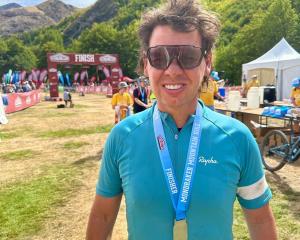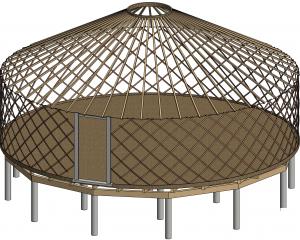The search for Mr Rivers was called off early yesterday and after a debriefing with police Mr Haggitt went home.
However, he told the Otago Daily Times he could not sleep for wondering what more could have been done.
Fourteen years ago, Mr Haggitt was involved in a boating accident of his own, which led to his involvement with search and rescue.
He and three friends spent 40 minutes in Lake Hawea clinging to their damaged, capsized and mostly submerged cabin cruiser.
They did survive and told the Otago Daily Times they were "lucky".
But they also created some of their own luck.
When their boat hit a partly submerged drum at about 15 knots and sank, they were already wearing their life jackets.
They were eventually able to reach and let off three rocket flares and one smoke flare.
And they did what the survival manuals suggest - they stuck together and they stayed with the upturned hull of their boat.
That event prompted Mr Haggitt to learn all he could about boat safety.
A resident of Kirwee, in Canterbury, he joined the Coastguard at Lyttelton, upgraded the safety features on his new boat and now, living at Lake Hawea, he is actively involved in search and rescue.
He leads a team of 10 "quick response" skippers and crew ready to hit the water within a few minutes of a distress call.
"We just go. It's a cold lake and you don't have much time.
"I've been there; done that. I know it's not nice."
The group members have all done safety training courses and, in return for their services, are reimbursed by police for fuel used, but not their time.
On October 21, the group will run a Lake Hawea boat safety open day, providing free boat checks, advice on fire extinguishers and other safety devices, and flare training.
They will also be introduced to a new "two-minute form", intended to encourage boat users to leave information on shore about their intentions - under the windscreens of their vehicles.
"So often in the evening, especially if it has got windy, we'll see vehicles over there with trailers and [we wonder] where are they?
"Are they supposed to be back?
"Are they staying up the lake for a few days?
"What are they doing?
"We wouldn't have a clue. Running the search and rescue unit, it's nice to know," Mr Haggitt said.
He recalled the Monday evening in March 1998 when he was in the water "in the middle of Lake Hawea", clinging to the nose of his submerged cabin cruiser.
He spent 20 frustrating minutes trying to locate the flares inside the boat then found they were five years out of date and he could not read the instructions.
Four flares did work, although two of the rocket flares went "straight down" rather than into the air.
Mr Haggitt still has three yellowing newspaper clippings from 1998 that tell of their close call.
The four were extremely cold and a big swell washing over their heads threatened to separate them from the boat.
However, their flares were spotted by Jimmy Cotter, Glenys Hewson and Lorne Capell, who were fishing about 6km away.
After a 20-minute search, they found the group in the water and pulled them to safety.











